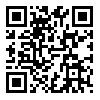Volume 42, Issue 3 (2024)
jmciri 2024, 42(3): 41-48 |
Back to browse issues page
Ethics code: IR.IUMS.FMD.REC.1401.489
Download citation:
BibTeX | RIS | EndNote | Medlars | ProCite | Reference Manager | RefWorks
Send citation to:



BibTeX | RIS | EndNote | Medlars | ProCite | Reference Manager | RefWorks
Send citation to:
Sajadi S, Koohi K, Gholipoor Arbastan Z. Effectiveness of Extracorporeal Shock Wave Therapy (ESWT) on the Pain of Patients With Plantar Fasciitis. jmciri 2024; 42 (3) :41-48
URL: http://jmciri.ir/article-1-3326-en.html
URL: http://jmciri.ir/article-1-3326-en.html
Physical Medicine and Rehabilitation, Neuromusculoskeletal Research Center, Department of Physical Medicine and Rehabilitation, School of Medicine, Iran University of Medical Sciences, Tehran, Iran
Abstract: (1176 Views)
Abstract
Background: Plantar fasciitis is a common, important and complicated disorder for which no fully effective treatment has been introduced to reduce the intensity of the pain caused by it, or the existing treatments have been associated with various complications. Therefore, according to the positive effects of extracorporeal shockwave therapy (ESWT) in previous studies, this study was conducted with the aim of determining the effect of ESWT on the pain caused by plantar fasciitis according to gender, age and body mass index, duration of symptoms, patient’s occupation, and the number of treatment sessions.
Methods: This analytical-cross-sectional study included 18 patients with plantar fasciitis who were referred for ESWT. They underwent ESWT with Radial device of the Novin company with a pressure of 2.5 bar, 10 Hz and 2000 pulses at weekly intervals. Heel pain in the morning and standing time were evaluated using the Visual Analogue scale (VAS), at four time points: before, after the last session, after one week from the last session, and after one month from the last session. A between-group comparison was also performed based on patients baseline variables.
Results: The intensity of pain decreased with a significant difference in all the investigated times compared to baseline. The amount of morning pain and pain while standing was reduced by more than 30% in 82% and 77% of patients, respectively. Among the different variables only patients with prolonged standing jobs demonstrated significant pain improvement 1 month after the intervention (P < 0.028). Only mild local pain and burning after ESWT was reported in 7 patients (39.9%) and other patients did not report any specific complications.
Conclusion: ESWT could be suggested as a safe and effective treatment in patients with plantar fasciitis. Based on our preliminary results, ESWT may be of more benefit to the patients with prolonged standing jobs.
Background: Plantar fasciitis is a common, important and complicated disorder for which no fully effective treatment has been introduced to reduce the intensity of the pain caused by it, or the existing treatments have been associated with various complications. Therefore, according to the positive effects of extracorporeal shockwave therapy (ESWT) in previous studies, this study was conducted with the aim of determining the effect of ESWT on the pain caused by plantar fasciitis according to gender, age and body mass index, duration of symptoms, patient’s occupation, and the number of treatment sessions.
Methods: This analytical-cross-sectional study included 18 patients with plantar fasciitis who were referred for ESWT. They underwent ESWT with Radial device of the Novin company with a pressure of 2.5 bar, 10 Hz and 2000 pulses at weekly intervals. Heel pain in the morning and standing time were evaluated using the Visual Analogue scale (VAS), at four time points: before, after the last session, after one week from the last session, and after one month from the last session. A between-group comparison was also performed based on patients baseline variables.
Results: The intensity of pain decreased with a significant difference in all the investigated times compared to baseline. The amount of morning pain and pain while standing was reduced by more than 30% in 82% and 77% of patients, respectively. Among the different variables only patients with prolonged standing jobs demonstrated significant pain improvement 1 month after the intervention (P < 0.028). Only mild local pain and burning after ESWT was reported in 7 patients (39.9%) and other patients did not report any specific complications.
Conclusion: ESWT could be suggested as a safe and effective treatment in patients with plantar fasciitis. Based on our preliminary results, ESWT may be of more benefit to the patients with prolonged standing jobs.
Type of Study: Research |
Send email to the article author
| Rights and permissions | |
 |
This work is licensed under a Creative Commons Attribution-NonCommercial 4.0 International License. |






